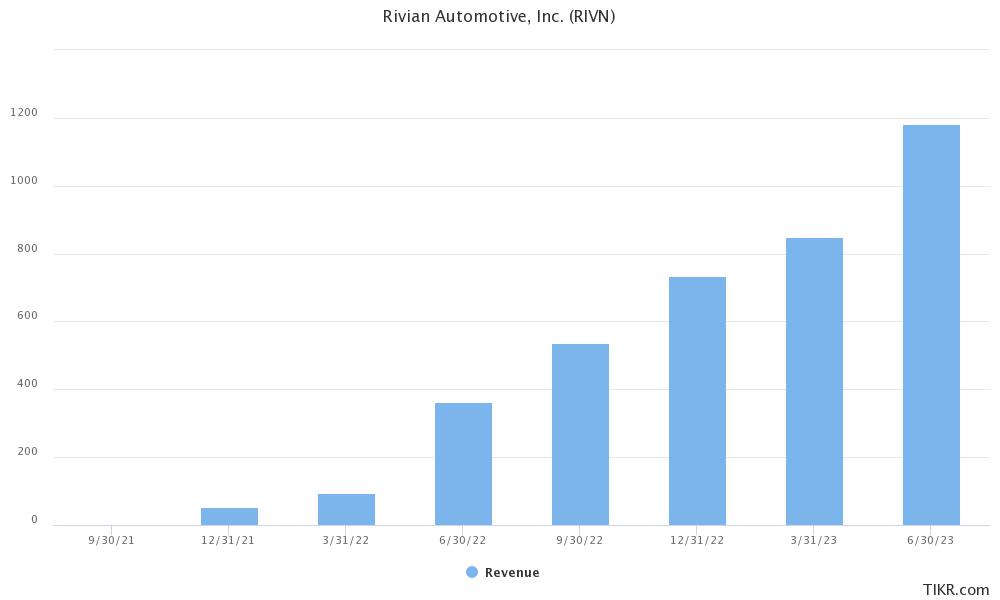Fund Managers Sell Rivian Stock Even as Barclays Terms It ‘Next Tesla’
Please note that we are not authorised to provide any investment advice. The content on this page is for information purposes only.
The Q4 2022 13F filings have shown that David Einhorn of Greenlight Capital has exited Rivian (NYSE: RIVN) while George Soros has trimmed his positions. Barclays is meanwhile bullish on RIVN and sees it as a likely candidate to be the “next Tesla.”
Notably, Ford has also sold most of its stake in Rivian. It was the second largest RIVN stockholder after the IPO and held around a 12% stake. The company gradually sold the shares last year and now holds just over 1% of the EV (electric vehicle) company.
Amazon has held its stake and continues to be the largest RIVN stockholder. The e-commerce giant has also placed a massive order for electric delivery vans from Rivian.
Barclays says Rivian could be the “next Tesla”
Wall Street has always been obsessed with the “next Tesla” and “Tesla killers.” However, the slump in many startup EV companies has shown that it is not easy to compete in the EV industry which is getting more competitive with each passing day.
Many of the startup EV companies are struggling with execution. This is where Tesla stands out. The company’s capacity ramp-up has impressed even the most vocal critics.
Barclays analyst Dan Levi said, “We are hard pressed to see any company in the auto landscape as the ‘next Tesla,’ as Tesla has been quite unique in its accomplishments.”
He however added, “that said, if we were to identify any of the start-up EV automakers as the closest to Tesla (vis-à-vis defining characteristics), we believe it would be Rivian. Rivian thus far has established key moats in product and technology.”
RIVN also struggled with production in 2022
2022 was a tough year for automotive companies due to supply chain issues. Rivian was targeting a production of 25,000 vehicles last year which was half of its previous plans. Eventually, the company could produce only 24,337 vehicles in the year.
Tesla too missed its guidance last year and could manage only about 1.4 million deliveries. In 2023, the Elon Musk-run company expects to deliver 1.8 million cars. During the Q4 2022 earnings call, Musk said that the company has the capacity to produce 2 million cars in 2023 if everything goes right.
Lucid Motors meanwhile managed to produce more cars than its final guidance. That said, the company slashed its guidance twice last year. Lucid Motors stock has also slumped since the 2021 listing. It recently saw selling pressure after it offered a $7,500 “credit” for some Air models.
Rivian is ramping up capacity
Rivian currently has two models, the R1T pickup truck and the R1S sports SUV. It is also producing delivery vans for Amazon. It delayed the timeline for the affordable R2 vehicle platform by a year to 2026.
Rivian currently has one plant in Normal in the US. It is looking to set up a second plant in Georgia which would have an annual capacity of 400,000 cars. The company expects to roll out vehicles from the plant, which would be built at a cost of $5 billion, in 2024. Rivian expects to have a total production capacity of 600,000 cars between the two plants.
When the company reports earnings later this month, it might provide guidance on its 2023 production plans.
Ford halts F-150 Lightning Production and Shipments
Yesterday, Rivian stock soared amid reports that Ford has halted the production and shipments of its F-150 Lightning electric pickup. The model competes with Rivian’s R1T. Notably, the F-series vehicles are a key driver of Ford’s profits and the F-150’s ICE (internal combustion engine) has been America’s best-selling pickup for 45 years.
Rivian went public in 2021
When Rivian listed in 2021, it became the biggest listing since Facebook’s 2014 listing. Rivian’s IPO sailed through easily and the company priced the shares at $78 each, which was above the already increased price range. The stock had a good listing and went on to hit an all-time high of $179.47, which was over twice the IPO price.
At its peak, Rivian commanded a market cap of over $150 billion. Many saw it as a sign of optimism towards pure-play EV companies. However, there were skeptics, which included Tesla’s CEO Elon Musk, who found the valuation too high
The company’s market cap is now just under $20 billion. To put that in perspective, it had $13.8 billion as cash and cash equivalents on its balance sheet at the end of September. There have been times when the company has traded below its enterprise value.
RIVN slashed workforce to trim costs
While Rivian has a strong balance sheet and last year it said that the cash on its books would fund its operations until 2025, it is still being prudent. Recently, it laid off 6% of its workforce. Last year also it laid off 6% of its workforce. The company also shelved its joint venture with Mercedes Benz to produce electric vans in Europe.
Several top executives have also quit Rivian. Steve Gawronski, the vice president in charge of parts purchasing, and Randy Frank, vice president of body and interior engineering are among the employees who have departed from Rivian this year. Frank was previously with Ford and joined Rivian in 2019.
Rivian witnessed an exodus of top executives last year also. In September, its general counsel Neil Sitron also exited the company. In the fourth quarter of 2022, Patrick Hunt, a senior director in the strategy team also quit.
The next key update that we’ll get from Rivian would be the Q4 2022 earnings report which is scheduled for February 28. Analysts expect the company to report revenues of $734 million and a net loss of $1.6 billion.






